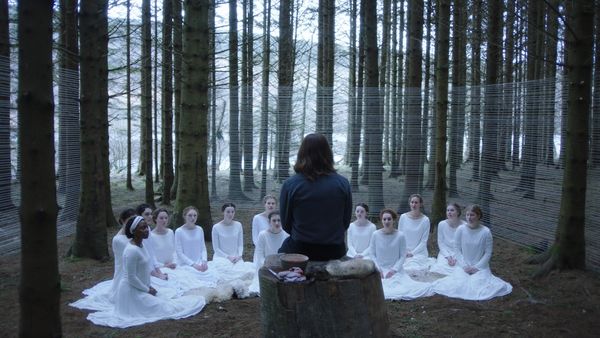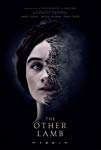Eye For Film >> Movies >> The Other Lamb (2019) Film Review
The Other Lamb
Reviewed by: Andrew Robertson

The Other Lamb is the kind of visceral allegory that makes me glad, one that sings with the particular poetry of pictures, one rooted in soil and souls and script and shot.
Within an indeterminate landscape (filmed in Ireland, but place is not just where roads go but what rides upon them) there is a compound. One defined by lamb, by lashings of wool, by ritual, rote, control of stories. It's an English language debut for award-winning director Malgorzata Szumowska. In 2017, Catherine S McMullen's script (then set in Australia) was featured on the Black List, an entity that's at least as confusing and contradictory in its inclusion as any other award involving Hollywood. Apart from, that is, as a rough indicator of potential quality, and quality is something The Other Lamb has by the bushel.

Except grain doesn't match the nature of this film's agricultural, it is not agrarian but ovine, red in tooth and clean and bright, washed in the blood of the lamb. Are you whiter than the snow? Selah is, Raffey Cassidy. Despite her age, not yet old enough to see some films in cinemas, she's a veteran of this kind of tale, The Killing Of A Sacred Deer among them. Wide eyed and earnest, and possessed of a different strength in the marrow, she starts to question the Shepherd's teachings. It does not go well for the flock.
Michiel Huisman has the same kind of wispy intensity that would make him a Herzog protagonist, though he is more Grizzly Man's Timothy Treadwell than the skinikaphagous Michael Shannon. Undeniably charismatic, when his tenderness turns, as sweet lamb to gristle it sticks, but it's revelatory - one of any number of words that I would try not to use because this is more of Leviticus than levity. Denise Gough is Sarah, the "cursed wife", and from our first meeting she is the film's other powerhouse.
Had this been Australia and tan and red where this is brown and green then it would still be sheep, still be the white of wool and the bloom of blood. It would still be groups of women, of words, of control of story. It would draw different parallels, perhaps, not The Wicker Man but Fury Road, but I have no qualms about mentioning this in the same breath as those. "Only the shepherd tells stories", that is one of the rules, the laws. One of the ways that the flock are set apart, are set aside, are ruled, reaped.
It is not a flaming sword that drives them from their woven Eden but law enforcement's caprice. There are deep and abiding connections to the land and there is rent, and the two are not necessarily as easy to interweave as fabric. This is not a giving away, nor is it only a going away - as well to tell you that if there is some anti-Bechdel test then this film might fail it, one conversation between a twice-named man and an un-named other, sotto vocce, one exclamation from one man to another but it is about women. To be kept and to be in keeping are two separate ways of being, and it is ever at the generational leap that systems are most tested.
It is a standing joke with my editors that no film festival I attend is complete without scheduling requiring that I cover a film in which a teenage girl comes of age. A task for which I, as much middle as aged, am qualified not through big-bearded becoming-baldness but by being big brother to three sisters. It has been remarked upon that our dynamic is visibly different when various combinations of us are present, this is true perhaps of all human groups, but in families these combinatorial distinctions are palpable. So too here, not just in costume (reds, whites, blues) but presence, tone, poise, tension. There are moments that are pure cinema. A hill growing beneath a sleeping shepherdess is one for the canon of Dolly Zoom effects, Michal Englert as cinematographer a frequent Szumowska collaborator.
The Other Lamb is oneiric, pareidoliac, one where faces are painted and set, possessed of an immediate mythic weight that recalls the sharp shocks of shorts like Lin or Wren Boys or Creeling but sustains that over time, distance, to create something that is rich and fulfilling. As time has its way with Selah so too does time change - back, forth, left, right - shades of Eraserhead in some of its viscerality, which might seem overblown but is to my mind just the right side of absurd, as the latter Suspiria, as The True History Of The Kelly Gang, something baptismal from a font as much arterial as architectural.
The Other Lamb is properly fabulous, it feels not only mythic but as if it is part of a cycle, one from which other tales are spalled, spilled, not by hammer blows or unkept bowls but the knots and drops of weaving, the weft of women's woes and weariness. Heavy and layered, this is something that has weight, not woolly but felt.
Reviewed on: 21 Mar 2020


















